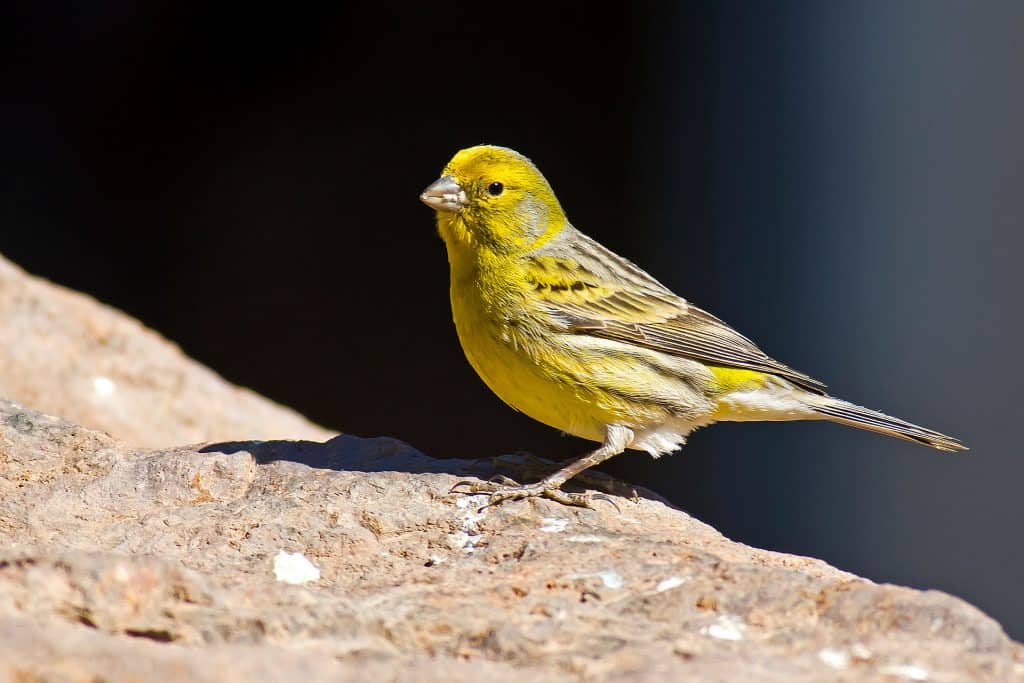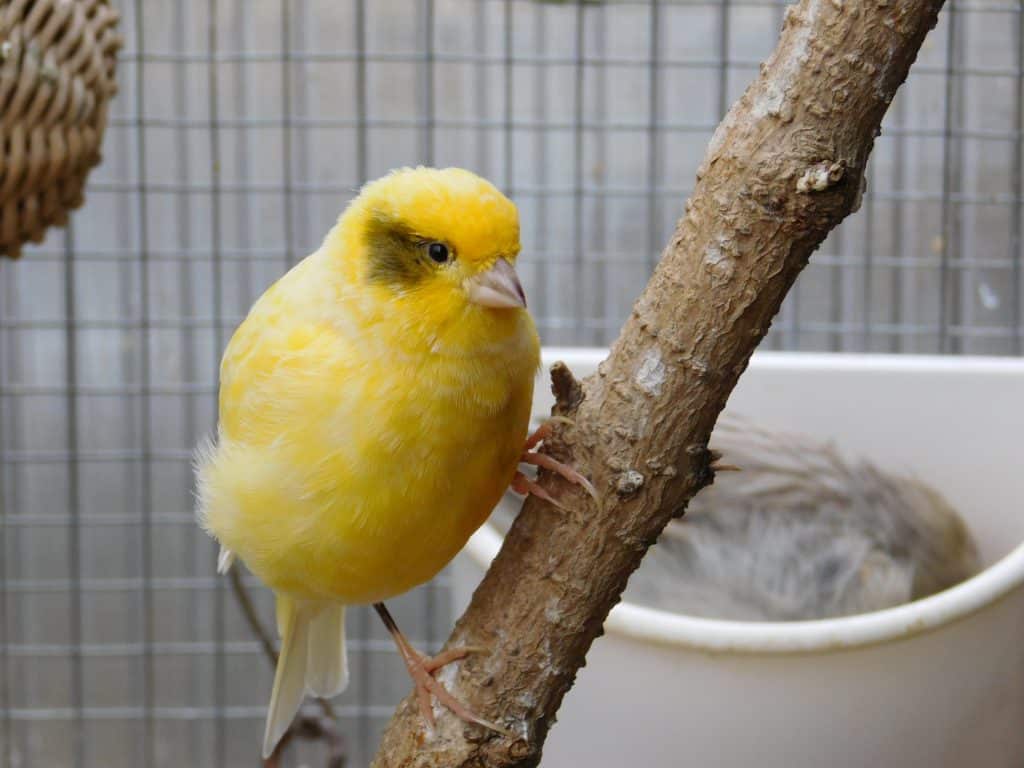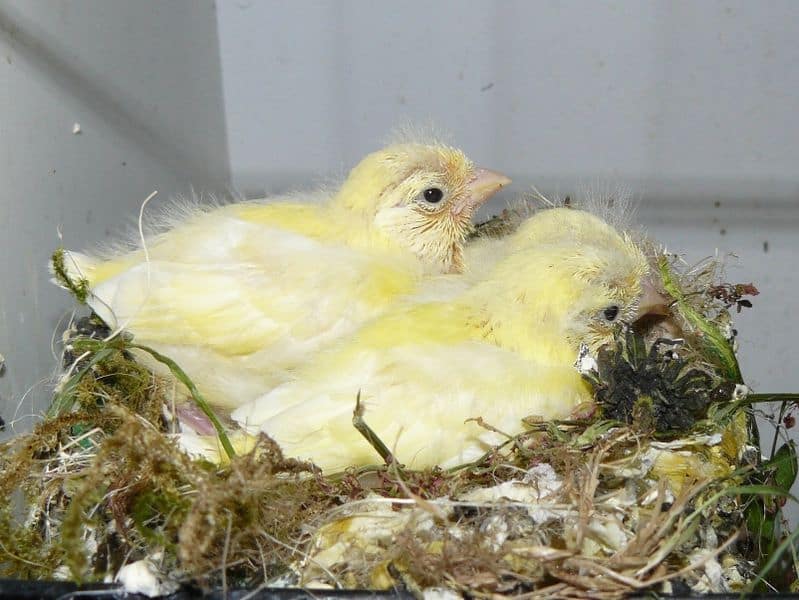The canary is one of the most recognisable pet birds alongside the budgerigar and is the focus of many sayings and stories. But what most people don’t realise is that there are many varieties of canary that have descended from the original wild type – so many that there are even three categories to classifying them by either type, song or colour.
Of the many types, one of the most straightforward and arguably most original looking type of canary is the Fife Fancy.
Background to the Fife Fancy
The wild canary, or Atlantic Canary, is a member of the Serin family of finches and does actually come from the Canary Islands, as well as the Cape Verde Islands off the coast of west Africa.
The original birds were a buff green colour and had the markings that we see on many canaries today. There are loads of fun stories about how the canary came to Europe as a pet bird but no-one really knows.

Until around fifty years ago, there was no such thing as the Fife Fancy although other varieties such as the Gloster and the Border were around. As the Border canary grew in the size to the whoppers we see today, some breeders wanted to keep with the smaller, daintier type of the bird. So, the Fife Fancy was created in the Fife area of Scotland. While slow to catch on, it has made up for it since and is now one of the most popular types of canaries.
Colours of the Fife
One of the reasons that the Fife is a popular variety of canary is that there are lots of different colours to choose from. For example:
- Yellow – intense yellow shade
- Buff – yellow with frosted edging to the feathers, lighter in colour
- White – either all-white (recessive) or with some tiny yellow feathers (dominant)
- Green – similar to the wild coloured bird with black and brown markings on the feathers
- Cinnamon – brownish coloured feathers on a yellow base, often with pink eyes
- Blue – similar markings to the green but the base colour is blue
- Faun – similar to a cinnamon but the base colour is white
- Grizzled – any colour bird that has light grey patches

Keeping the Fife
Like other varieties, Fifes can be kept in a cage or in an aviary. Cages often offer the best results in terms of breeding as in a flight they can bicker and get side-tracked quite easily. They don’t need large cages for breeding as only live in them during the breeding season – afterwards they can live in an aviary or a larger cage to rest and recuperate.
The Fife canary lives on average of ten years with the hens being at top fertility from two to five and the cocks from the first year until they are around size years old.
Favourite foods
There are lots of great mixes available for canaries and any of these will be suitable for the Fife canary. If you have fussy birds like mine, a mix without small, round black rapeseeds will be favoured as mine simply leave them in the container. You can also get conditioning seed to feed before breeding season to get the birds in the best condition for spring.
In addition to seed, canaries love millet spray and will eat a variety of greens such as kale and broccoli. In fact, I’ve always found canaries one of the easiest birds to feed and there isn’t much that they won’t eat when offered. They also need access to grit to help with the calcium levels.
Water
As well as drinking water, it is important to give the birds somewhere to bath. Canaries are fanatically bathing birds and will bath almost every time there is fresh water available. They totally drench themselves and it is a fun spectacle to watch! This helps keep their feathers in good condition and ward off mites as canaries are one of those birds who can pick up mites quite easily.
Breeding
Breeding of all canaries is roughly the same. Pairs can be kept separate but able to see each other until the cock is singing well and sometimes regurgitating food through the bars to the hen who will chirp and beg from him. In the UK, they will breed around the same time as most of the wild British birds, from March onwards.
They often use proper canary nesting pans with some material added such as coconut fibre and then softer material such as jute or cotton in the centre.
Breeders often remove eggs until the fourth is laid and replace them with dummies. Once the fourth is laid, replace all the eggs and then the chicks will all hatch at the same time. They are incubated for around 14 days and fledge at around three weeks. They are mostly fed by the cock and the hen may go back to nest again.

Conclusion
Fifes are a great place to start with canaries. There are lots of great colours and they are relatively inexpensive to buy. They have a great song and are friendly birds (mostly) who will often become quite tame in a flight. One of mine often sits on my shoulder or head when I’m around the flight and a few come to my hand for food on a morning. If you cage breed them, they can also be good breeders and either way are a pleasure to keep.
5
4.5